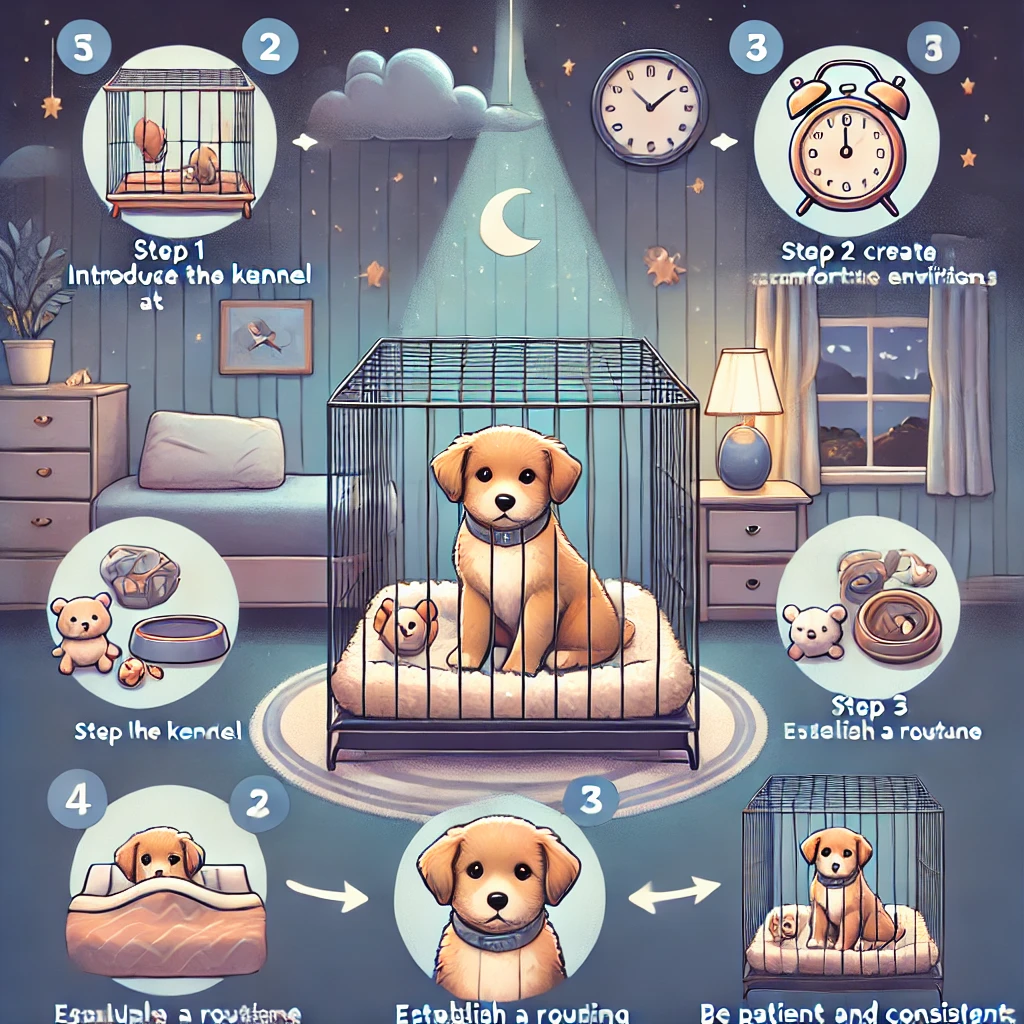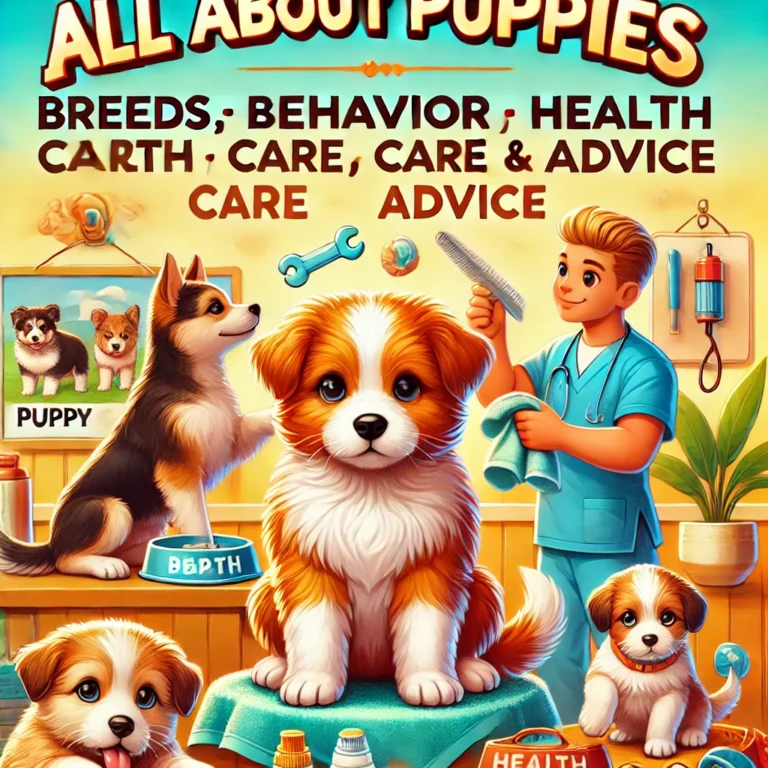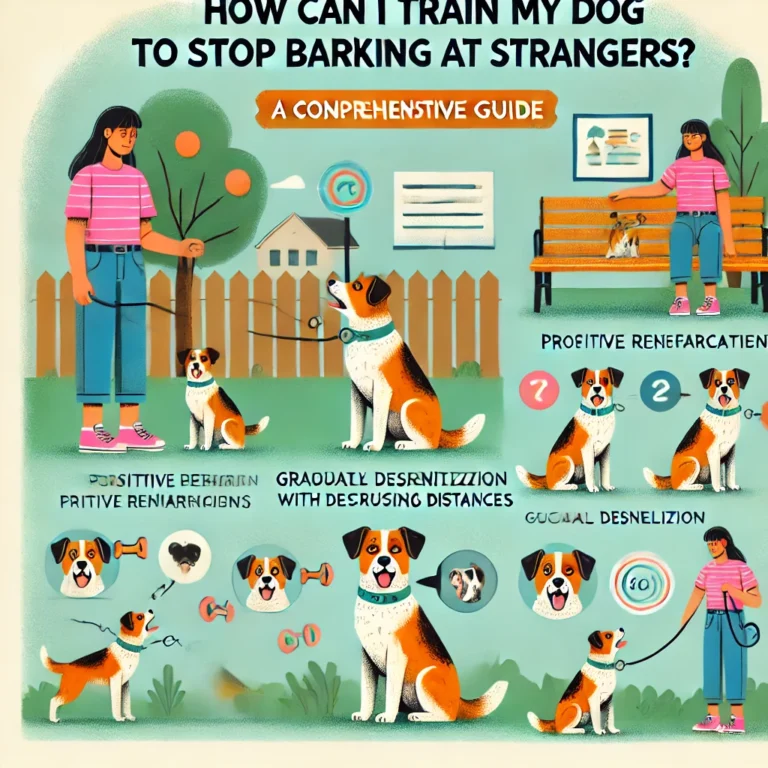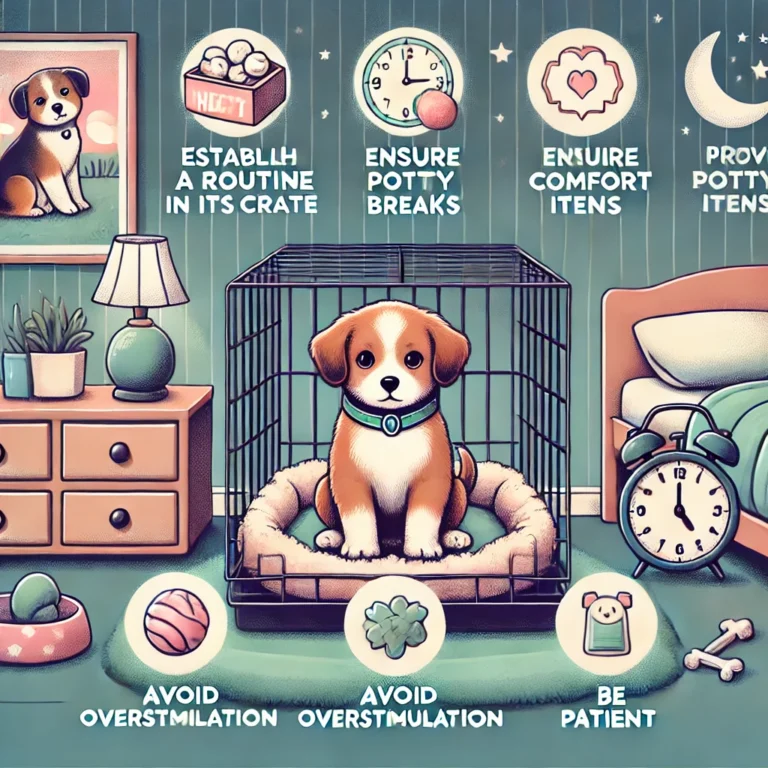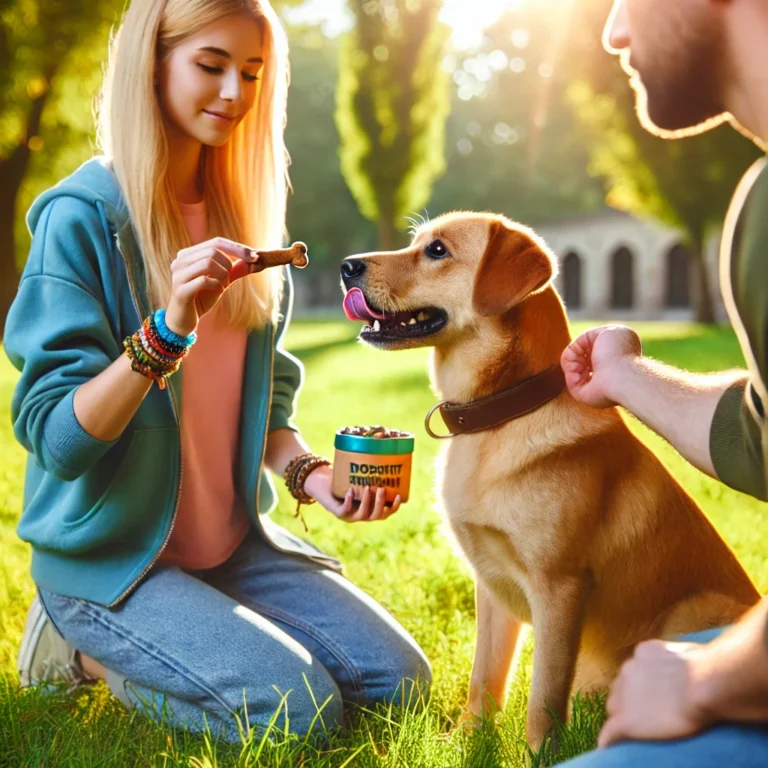Kennel Training a Puppy at Night: A Step-by-Step Guide
Crate training your puppy at night can be a game-changer for both you and your furry friend. It helps create a safe and comfortable space for your puppy to sleep, while also making nighttime routines smoother and more predictable. This guide will walk you through the steps to ensure your puppy adjusts well to their crate, making nights peaceful and stress-free.
Setting Up the Perfect Crate Space

Creating the ideal crate space for your puppy is crucial for their comfort and safety. Your puppy’s crate should be a cozy haven where they feel secure and relaxed.
Establishing a Bedtime Routine
Having a bedtime routine is just as important for puppies as it is for people. It helps prevent potty accidents and endless wake-ups in the middle of the night. Here are some tips to get your puppy ready for bed.
Consistent Bedtime
What’s most important is that you have a routine, not necessarily what’s in it. It’s just a way to signal to the dog that it’s time to wind down. With my own dogs, I’ll do a relaxing routine. I’ll have them settle down with a chew toy and then brush their teeth afterward. Whatever you choose, be consistent. Your dog will come to recognize and expect the nightly routine.
Pre-Bedtime Activities
Establish a bedtime routine for your puppy to encourage a restful night’s sleep. This should include their evening meal a few hours before bedtime, some time to chew on an appropriate toy for decompression, multiple potty breaks to make sure they are running on empty, and then a calm entrance into the crate for sleep.
Calming Techniques
Doing the same thing over and over creates habits. So consistency is incredibly important to teach your dog how to fit in with the family. A bedtime routine helps puppies know what’s coming and get settled for bed. Using positive reinforcement to crate train your puppy during the day pays off when your pup happily cuddles up in his crate. With a little bit of effort and consistency, you and your puppy will be getting a good night’s sleep in no time.
Handling Nighttime Whining and Barking
Brace yourself for the toughest part of kennel training a puppy at night. When you finally close the crate door and shut the lights off, your puppy might start creating a fuss by whining and barking. This is totally normal, especially since the surroundings are new.
Understanding the Whining
When you hear your puppy whining in crate, it can be tough to know what they need. Are they just testing you, or do they need a potty break? If you’ve been consistent with your training, try to ignore the whining. They’ll probably stop soon if they’re just testing you.
When to Comfort
Sometimes, your puppy might genuinely need comfort. If they seem really distressed, it’s okay to offer some reassurance. Just be careful not to make it a habit, or they might learn that whining gets them attention.
When to Ignore
Ignoring the whining can be hard, but it’s often the best approach. If you know your puppy doesn’t need to go out, try to resist the urge to comfort them. This helps them learn that nighttime is for sleeping, not for getting attention.
Nighttime Potty Breaks

Recognizing the Signs
Knowing when your puppy needs a potty break at night is key. If your puppy is restless, whining, or barking, it might be time for a trip outside. Pay attention to your puppy’s sleep schedule to anticipate when they might need to go.
Creating a Potty Schedule
Setting a regular schedule for nighttime potty breaks can help prevent accidents. For a young puppy, you might need to set an alarm to take them out every few hours. As they grow, you can gradually extend the time between breaks. A good rule of thumb is to take them out immediately after they wake up, before and after play sessions, and after meals. If you feel like you’re always taking them outside, you’re doing it right!
Minimizing Disruptions
When you take your puppy out at night, keep it all business. If they don’t go within five minutes, bring them back to their crate. This helps them understand that nighttime is for sleeping, not playing. If your puppy gets distracted easily, try practicing their “Go Potty” cue. Keeping a Puppy Potty Log can also help you track their schedule and adjust as needed.
Remember, housebreaking a puppy takes time and patience. Stick to the routine, and your puppy will learn when it’s time to go outside.
Using Positive Reinforcement
Rewarding Good Behavior
Positive reinforcement dog training is all about rewarding your puppy when they do something right. This makes them more likely to repeat the good behavior. You can use treats, praise, or even a favorite toy as a reward. The key is to be consistent and quick with your rewards so your puppy knows exactly what they did to earn it.
Avoiding Punishment
Punishing your puppy can lead to fear and confusion. Instead, focus on what you want them to do, not what you don’t want. If they make a mistake, redirect them to the right behavior and then reward them. This way, they learn in a positive and encouraging environment.
Building Trust
Using positive reinforcement helps build a strong bond between you and your puppy. They learn to trust you and feel safe. This trust makes training easier and more effective. Remember, patience and consistency are key to successful training.
Positive reinforcement dog training is not just about teaching commands; it’s about building a loving and trusting relationship with your puppy.
Dealing with Setbacks
Training your puppy to sleep in a crate at night can be tough. There will be ups and downs, but success will come if you stay patient and consistent. Here’s how to handle setbacks along the way.
Transitioning to Longer Nights
Gradually Increasing Crate Time
Start by gradually increasing the time your puppy spends in the crate at night. Add a few extra minutes each night until they can comfortably stay in the crate for longer periods. This helps them get used to the idea without feeling overwhelmed.
Monitoring Progress
Keep an eye on how your puppy is doing. If they seem stressed or anxious, slow down the process. It’s important to make sure they’re comfortable and not feeling forced.
Celebrating Milestones
Celebrate the small wins! When your puppy successfully stays in the crate for a longer time, give them a treat or extra cuddles. This positive reinforcement will make them feel good about their progress.
Remember, every puppy is different. Some may take longer to adjust, and that’s okay. Patience is key.
If you follow these steps, you’ll help your puppy transition to longer nights in the crate smoothly and with less stress.
Wrapping It Up
So there you have it! Crate training your puppy at night might seem like a big task, but with a bit of patience and a lot of love, you and your furry friend will get through it just fine. Remember, every puppy is different, so don’t stress if things don’t go perfectly right away. Stick to the routine, stay calm, and give lots of positive reinforcement. Before you know it, your puppy will be sleeping soundly in their crate, and you’ll both be getting a good night’s rest. Happy training!
Key Takeaways
- Choose the right crate size to ensure your puppy feels secure but not cramped.
- Establish a consistent bedtime routine to help your puppy know when it’s time to sleep.
- Use calming techniques to soothe your puppy and reduce nighttime anxiety.
- Recognize signs that your puppy needs a potty break to avoid accidents.
- Reward good behavior to reinforce positive associations with the crate.
Frequently Asked Questions
How do I choose the right crate for my puppy?
Pick a crate that is big enough for your puppy to stand, turn around, and lie down in. It shouldn’t be too large or your puppy might use one end as a bathroom.
Where should I place the crate at night?
Put the crate in a quiet, draft-free area where your puppy feels safe. Many people place it in their bedroom so the puppy feels close to them.
What should I do if my puppy whines at night?
If your puppy whines, first check if they need to go potty. If not, try to ignore the whining to avoid reinforcing the behavior. Comfort them only if they seem really distressed.
How often should I take my puppy out for potty breaks at night?
Young puppies usually need to go out every 2-3 hours. As they grow, they can hold it longer. Set a schedule and gradually extend the time between breaks.
Can I give my puppy treats for good behavior in the crate?
Yes, rewarding your puppy with treats for good behavior helps them associate the crate with positive experiences. Always praise them when they are calm and quiet in the crate.
What if my puppy has accidents in the crate?
Accidents can happen. Clean the crate thoroughly to remove any odor and try to adjust the potty schedule. Make sure the crate isn’t too big, as this can encourage accidents.

